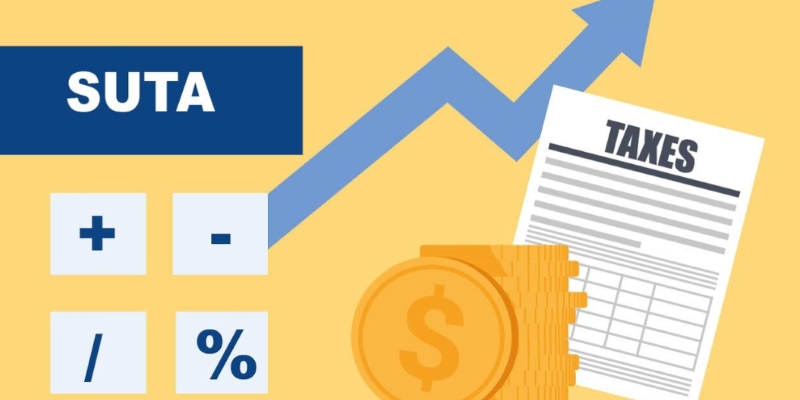How Currency Swaps Help Businesses Hedge Against FX Risk
Nov 15, 2024 By Elva Flynn
In today's global business environment, managing foreign exchange (FX) risk is critical. Constant currency fluctuations can impact the financial stability of companies operating across borders. Currency swaps offer a practical solution to this challenge. Through a currency swap, two parties agree to exchange specific amounts in different currencies at a set rate, with a plan to reverse the exchange later.
In effect, this type of agreement allows the companies to quote an exchange rate with the other party, thus reducing fluctuating movements in currency. The currency swap offers businesses the possibility of very good management of FX risk, guaranteeing more stability in financial outcome and protection against any volatility in the exchange rate.
Understanding Currency Swaps: The Basics
Currency swaps are financial contracts between two parties to exchange specific amounts of different currencies. In principle, the party commits a certain amount in one currency and receives a similar amount in another currency based on an agreed exchange rate. This initial exchange is made at the beginning of the agreement. At the end of the agreement period, these two parties exchange the same amounts at a pre-agreed rate with no effect of the fluctuation of currency during the agreement.
A swap agreement allows firms to hedge in advance an exposure with the exchange rate that is agreed upon in advance, so they are protected against a potential loss from price volatility of exchange rates. Example: A US-based company that has expenses in euros and revenues in dollars can make use of a currency swap, which would facilitate hedging of its euro exposure by fixing an exchange rate for some time. That might be pretty handy working in countries whose exchange rate can change overnight.
How do Currency Swaps Work in Practice?
Currency swaps are used in two main ways: fixed-for-fixed swaps and fixed-for-floating swaps. Heres how each type functions:
Fixed-for-Fixed Currency Swaps

Under this type of an agreement, parties agree to swap fixed-interest payments in different currencies during a pre-defined period. For example, an American-based company having liability in euros may enter into a currency swap with a European company that has liabilities in dollars. Through the swapping of a pre-defined quantity in each other's currency, these companies can fulfill their financial liabilities without concerning themselves with exchange rate fluctuations.
Fixed-for-Floating Currency Swaps
This type of swap involves one party paying a fixed interest rate in one currency while the other pays a floating rate in the other currency. This swap type suits companies that need a balance between fixed-rate stability and potential benefits from variable interest rates, often influenced by market conditions. For instance, if a business anticipates that interest rates will decline, it may choose a fixed-for-floating swap to gain from potentially lower floating rates.
Currency swaps offer flexibility, as companies can tailor the terms to align with their specific FX exposure needs. This makes them an attractive option compared to more rigid methods, like spot transactions, where the exchange rate is locked for a single transaction without the flexibility of term customization.
Implementing Currency Swaps: Key Considerations
Implementing currency swaps as part of an FX hedging strategy requires careful planning and consideration of several factors:
Understanding the Companys Exposure
Before entering a currency swap agreement, businesses should evaluate their exposure to FX risks. This involves assessing how much of their cash flow, revenue, or expenses are in foreign currencies. The company needs a clear understanding of its currency needs to structure the swap agreement to address its specific risks.
Choosing the Right Swap Structure
Selecting the right swap structurefixed-for-fixed or fixed-for-floatingdepends on the companys objectives and its tolerance for variable interest rates. Companies that prefer stability might opt for a fixed-for-fixed structure, while those open to handling some interest rate volatility may choose fixed-for-floating swaps.
Determining the Swap Duration
The length of a currency swap should align with the companys long-term plans and currency exposure. A longer swap duration can lock in favorable rates for an extended period, which is beneficial for businesses with recurring FX exposure. However, longer durations may also involve higher costs or more rigid terms, so companies should balance the advantages against potential drawbacks.
Advantages and Disadvantages of Using Currency Swaps for FX Hedging
Currency swaps have become a popular tool for businesses aiming to manage FX risk. However, while they offer distinct benefits, currency swaps also come with certain challenges that companies must consider before implementation.
Advantages
Protection Against Currency Fluctuations: Locking in exchange rates through currency swaps shields businesses from sudden rate shifts, offering stability in cash flows, especially in volatile markets. This ensures predictable financial outcomes across varying foreign currencies.
Enhanced Cash Flow Management: Fixed exchange rates help businesses plan cash flows accurately, supporting effective budgeting and forecasting by reducing uncertainties tied to foreign income and expenses.
Cost Efficiency: Currency swaps streamline FX management by involving only two transactions, potentially reducing overall transaction costs and making FX hedging simpler compared to multiple forward contracts or spot transactions.

Disadvantages
Interest Rate Risk: With fixed-for-floating swaps, one party bears interest rate fluctuations, risking increased costs if rates unexpectedly rise during volatile economic conditions.
Counterparty Risk: A swaps success depends on both parties meeting obligations; if one defaults, financial losses may result, making reliable counterparty selection crucial.
Complexity in Implementation: Currency swaps involve intricate terms, requiring expertise for proper structuring, which may increase costs and complexity, especially for companies new to FX hedging.
Conclusion
Currency swaps offer a structured, effective way to hedge against FX risk for companies involved in global markets. By fixing exchange rates for a specific period, businesses can manage currency exposure without worrying about the impact of volatile exchange rates. However, implementing a currency swap strategy requires a thorough understanding of a companys FX risk, careful selection of the swap structure, and diligent evaluation of counterparty risk. When done correctly, currency swaps not only protect against currency fluctuations but also support improved cash flow predictability and reduced transaction costs.

Saving Money And Making A Budget For An Apartment

Will Mortgage Rates Go Down Soon? Expert Insights

Understanding SUTA Tax: What You Need to Know

Pay Off Your Automobile Loan Early

What's PMI? How To Get Private Mortgage Insurance: A Primer
How Currency Swaps Help Businesses Hedge Against FX Risk

What Is a Purchase Money Mortgage and Current Investment Property Loan Rates?

Parabolic SAR Indicator: Formula, Settings, and Strategies Explained

Basics of Tax Planning

